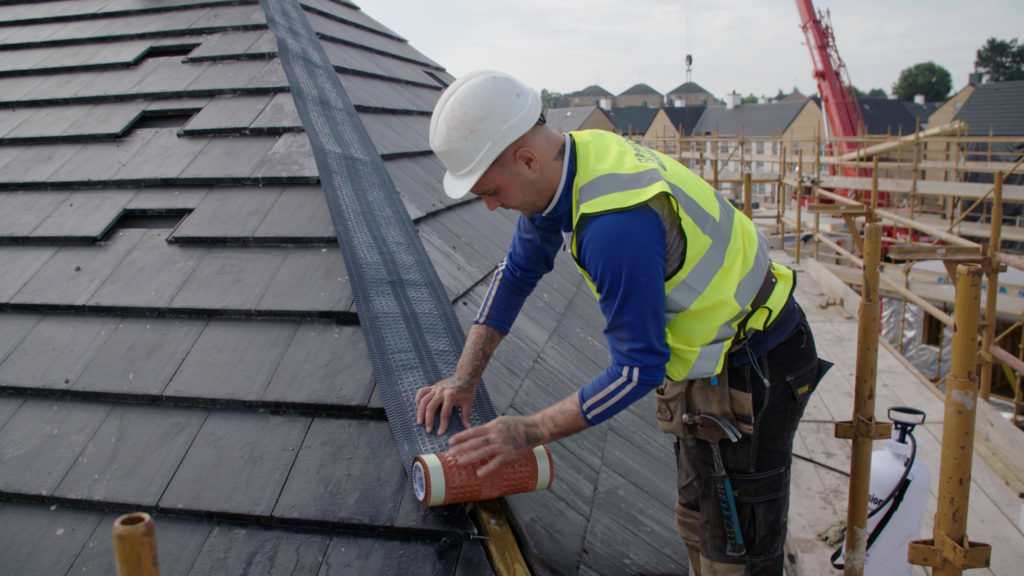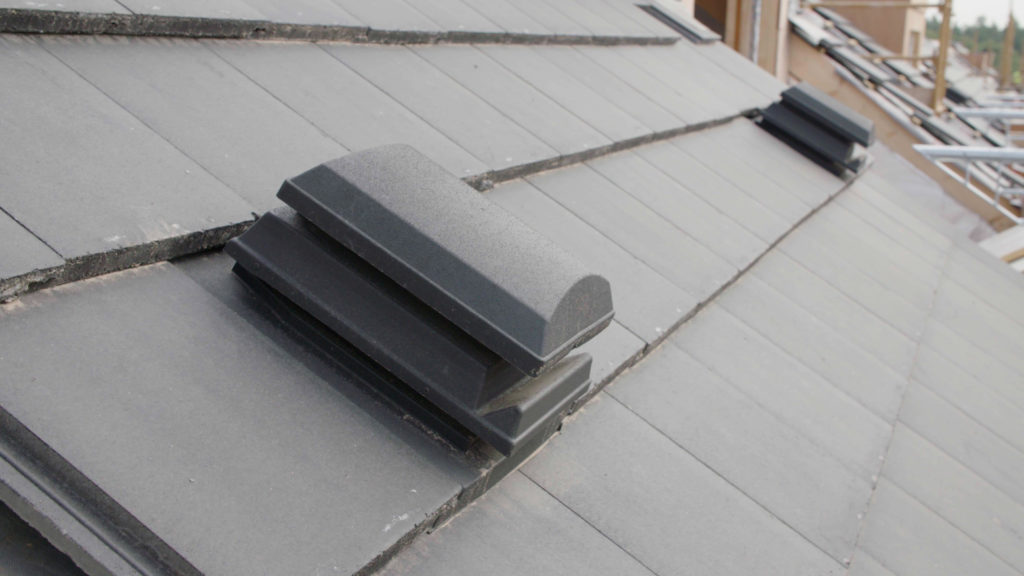The presence of mould and mildew in residential properties is not only unsightly but also extremely unhealthy. Preventing condensation build up can be easier said than done but as John Mellor, Senior Product Manager from manufacturer Glidevale Protect explains, early engagement within the supply chain can help identify solutions that work in both theory and practice.
Within any residential setting, there are many triggers for condensation including cooking, washing, drying clothes, showering and even breathing. With the correct levels of natural ventilation, this moisture can dissipate but if a building is not ventilated adequately, the moisture can be absorbed by the structure itself through interior surfaces. A significant proportion can end up in loft spaces, where it can cause condensation to build.
Often mistaken for roof leaks, the growth of fungi such as black spot mould and stains on ceilings are mostly caused by harmful roof space condensation. If left untreated, this can cause significant damage to both the building fabric and the health of inhabitants, particularly those with allergies and conditions such as asthma and respiratory issues.
Achieving balance
Damp caused by condensation is not something that only affects cold or poorly maintained homes; increased thermal efficiency in new-build properties can also result in issues that need to be addressed. That’s because the greater thickness of insulation and stricter airtightness targets can create a roof space that needs to be effectively ventilated.
Keeping roof spaces clear of condensation requires a considered approach, and one that balances airtightness with ventilation to comply with relevant standards such as BS 5250 without excessive costs. Here, the use of specialist roofing solutions such as membranes, underlays and roof vents can tick more than one box.

Know your roof type
A different approach is required for what are known as ‘warm’ or ‘cold’ roofs. Put simply, a warm roof has insulation placed above, between or below the rafters with small or no voids above the sloping insulation. By contrast, a cold roof is where the insulation is placed between the ceiling joists with a large void created above this horizontal insulation. Both can benefit from the use of specialist roofing underlays, but the type of membrane used will affect the amount of additional ventilation required.
Understanding underlays
The type LR pitched roofing underlay is airtight but allows water vapour to disperse into the atmosphere. This membrane can be used on a cold roof but additional ventilation will be required at eaves or ridge for a dwelling sized roof and the ventilation needed at eaves will depend on whether the ceiling is well-sealed or not. In warm roof constructions, the use of a type LR underlay will not require any additional ventilation, although a well-sealed ceiling and separate air and vapour control layer (AVCL) installed on the warm side of the insulation is recommended.
The second type of LR underlay available on today’s market is both air and vapour permeable, ensuring airflow through the material and allowing vapour to escape to control the risk of condensation. Whilst an air permeable underlay may involve higher initial material costs, this is offset by no additional requirement to ventilate, saving labour and installation time.
Air and vapour permeable membranes can be used without additional ventilation, as accepted by the NHBC in its Technical Requirements R3 Document, related to cold roof construction. The only exceptions are where closed jointed sarking boards, or an airtight roof covering is used. In the latter case, it would be necessary to ventilate the batten space.
The third category of pitched roofing underlay is type HR, which is airtight and impermeable, meaning water vapour is prevented from travelling through the material. Designed to overcome disadvantages of traditional type 1F felts, HR underlays are generally the most cost-effective. However, this must be balanced against the additional high and low-level ventilation provision required for both a cold and warm roof. Ventilation for both cold and warm roofs is imperative to avoid the risk of interstitial condensation forming on the underside of the underlay.

Additional considerations
The correct specification of roofing underlays with an appropriate ventilation strategy will go a long way to help minimise the risk of condensation forming in the roof spaces. With tighter Building Regulations now in force and many properties within existing housing stock not up to standard, specifiers should consider what roofing ventilation options are out there that work hand in hand with the choice of underlay.
Dry-ridge and hip ventilation systems offer many benefits, particularly those that provide full weatherproof protection and wind uplift resistance. Solutions such as Glidevale Protect’s Fulmetal UniRoll, a new universal, dry fix ventilated ridge and hip system with unions, can deliver completely uninterrupted airflow of 5,000mm2/m which allows the roof to breathe and ensures condensation control. This type of product is typically installed as high-level ventilation in conjunction with a type LR or HR pitched roofing underlay on a cold roof to provide the complete solution.

For low-level ventilation at the roof’s eaves, various products can be also used in conjunction with a roofing underlay to deliver the required airflow into the roof space, including rafter, soffit and fascia ventilation. Other solutions can be easily retrofitted as part of a refurbishment or re-roofing project, such as the use of purpose designed slate or tile ventilators, which are profile and colour matched in with adjacent roof slates and tiles. These vents should have a purpose designed extension sleeve to ensure a continuous, permanent weatherproof path from the roof void to the outside, to meet the design requirements of BS 5250. Correctly installed slate or tile ventilators offer excellent long-term value and peace of mind as they will remain weatherproof and effective for the life of the building.
Expert guidance
With every home, and every roof, requiring a tailored approach, close and early collaboration with those who understand the solutions the best — the manufacturer — can be invaluable.
Header image shows Glidevale Protect’s VP300 roofing underlay in situ. Image ©Matthew Nichol









